Connect With Us
Blog
Items filtered by date: December 2019
Three Tips for a New Year of Running
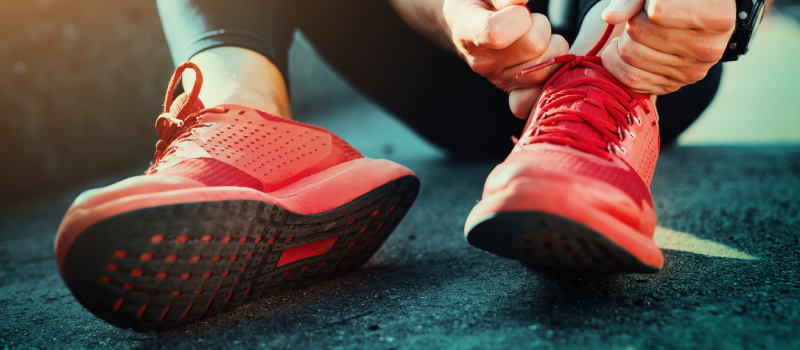
New Year’s resolutions, especially those that involve improving your health, can be a great thing. Of course, we all know how difficult it can be maintain our newfound good habits. What starts with the best of intentions too often ends in regret and frustration. But for those of you who are resolving to run more in the coming year, we want to offer some tips to help you keep it up and get the most out of one of the healthiest hobbies you’ll ever take up.
Set a series of goals and stick to them. Setting goals allows us to track our progress and can greatly enhance the feeling of accomplishment that comes from improving your fitness level. Setting both long- and short-term goals can make the whole process that much easier. At the daily level, set up a routine that you can stick to; try to run at the same time every day that you run, which should be a minimum of three days a week for most people. Every month, try to set a new goal in either the distance or amount of time that you run. Pushing yourself over time helps keep it interesting and fun.
Make sure you have the right equipment. Although running is one of the best exercises you can do, it can also lead to a number of injuries (as we know all too well). Proper running shoes are, of course, essential. But most people are also well-served by custom orthotics. We can make a pair of custom orthotics designed just for your feet, giving you the support and protection for optimal foot and ankle health.
Sign up for a race. There are numerous events every year in most cities, with varying degrees of competitiveness. Whether you choose to do a fun run or engage in some serious competition, having a race to look forward to can help keep you motivated and encourage you to reach new levels of fitness.
However you choose to approach your New Year’s resolutions, no matter what they are, we wish all of you the best of luck in 2014. And for those of you who do choose to run, we’ll be here to help keep you on your feet.
3 Tips For Choosing The Right Podiatrist
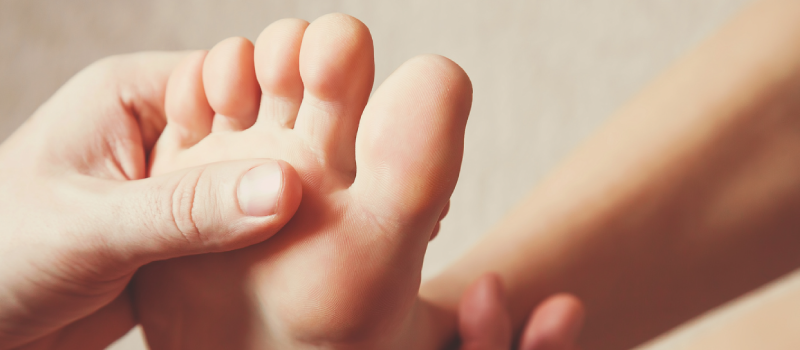
Long Beach Podiatrist
3 Tips For Choosing The Right Podiatrist
If you are suffering from a foot injury, you need to seek professional care to ensure your current state does not escalate and become a serious medical condition. Podiatrists are medical experts who specialize in foot care. With so many podiatrists available today, picking the right one can be a pain stacking endeavor. Here are three tips that will help you choose best podiatrist in long beach.
Credentials
When looking for the best podiatrist near me, you need to verify their credentials. Not only should a podiatrist be licensed to practice, they should also have the appropriate training. Although podiatrists go through a bachelor’s degree, they are not all the same. There are podiatrists with special skills and training in different areas like high-risk management, sports, surgery, and pediatrics. Therefore, you need to determine a podiatrist’s specialized training or skills to decide whether they are qualified to treat your condition. Your general doctor can help you narrow down the particular skills required for your specific ailment.
Apart from reviewing a podiatrist’s training, you need to check their background. Find out what other cases they have dealt with and their success rate. Determine how long a podiatrist has been practicing and their reputation among the medical fraternity. These queries will not only help you find the right professional but will almost guarantee you the highest quality of treatment.
Techniques
When it comes to foot care, the procedures adopted by the best podiatrist in long beach make a whole lot of a difference. One of the things you need to look out for when picking a podiatrist is the procedures they offer. The more techniques a podiatrist uses, the higher the chance of resolving your problem. The ideal podiatrist should have state of the art equipment for treating different foot conditions. They should also be skilled in applying different methods of treatment.
Charges
When looking for the best podiatrist near me, you should be keen on their charges. Conducting an online search or seeking recommendations from your doctor will help you generate a list of the best podiatrists and the rates of their services. While you should not compromise on quality because of price, it smart to seek out a podiatrist with an affordable treatment plan. When you find a foot care professional who offers friendly prices, ensure they have standard treatment facilities, are licensed, and have the full expertise to treat your condition.
Finding the right podiatrist in long beach is no easy undertaking. You need to bear in mind the potential candidate’s training, treatment options, and charges. You will never go wrong when you conduct your search for a podiatrist guided by these three simple tips.
The Three Stages of Ankle Injury Recovery

Ankle sprains are common injuries that occur in as many as 25,000 people every day in the United States. They occur when you roll, twist, or otherwise turn your ankle in a way that stretches or tears the ligaments that hold your ankle bones together. This can occur during sports or some other physical activity, but you are just as likely to sprain your ankle by walking on an uneven surface.
A sprained ankle may be painful and debilitating, but fortunately the sprained ankle injury recovery process usually doesn’t require surgery. Some cases may only require rest and over-the-counter pain medication, but you should still speak to a doctor to know the severity of your own injury.
The Stages of Ankle Injury Recovery
Regardless of how severe your sprained ankle may be, the sprained ankle injury recovery process can be divided into three stages. The first stage is the acute phase. Depending on the severity of your injury, this stage will last between one and seven days. The goal during the acute phase is to minimize swelling and slowly progress towards walking again. This usually involves rest, ice, compression, and elevation, otherwise known as RICE. To be more specific, you will need to stay off of your injured ankle, apply an ice pack to minimize swelling, and keep it elevated. You may need to wear a boot or a brace to stabilize the ligament as it heals. Over-the-counter pain medication such as ibuprofen may be taken to help manage your pain.
Stage two is the recovery phase. This is the stage when the ligaments start to heal, and it can last between one and two weeks depending on the severity of the sprain. The goal during this stage is to protect the ankle and begin to restore its function. Your doctor may suggest therapeutic exercises to increase your strength and range of motion.
Stage three is the functional phase. This stage can last for several months if the sprain was particularly severe, but it typically last for a period of weeks. The goal during the functional phase is to restore your ankle to your normal level of activity. You should have full range of motion during this stage, although you may still need to engage in exercises to strengthen your ankle.
The prognosis of ankle sprains tend to be favorable, with most patients making a full recovery. However, severe sprains may result in chronic pain and instability. Speak to your doctor to learn more about the severity of your own ankle injury and how to best proceed during the recovery process.
The Root Cause of Heel Pain
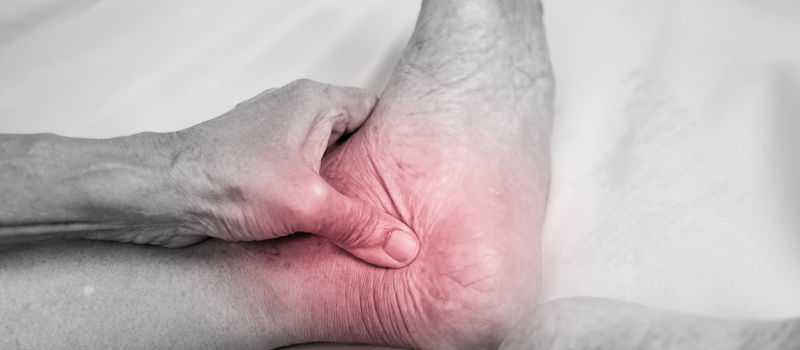
Heel PainOne of the most important parts of our body is our feet. Our feet are used in order for us to stand and move. It helps a lot in our everyday living. We use it for walking, running, jogging, jumping, and many more. Its main functions are to assist ambulation, weight transmission, and balance posture. Feet have many parts. One of those is the heels. The heel is located at the posterior end of the foot. It is very important part of one’s foot. It is founded on the projection of one bone, the heel bone or the calcaneus behind the articulation of the lower leg of the bones.
In our everyday living, we used our feet. Therefore, we also used our heels. There are also moments in our life that if we felt tired of walking or running, we experience pain in some parts of our feet. We experienced it at the end of the day. Oftentimes, we experience heel pain. But the question is what heel pain is? What is the root cause of heel pain?
What is the root cause of heel pain?
Nowadays, people are very busy in their everyday work. They went to their respective workplace wearing different kinds of shoes that are appropriate for their jobs. A lot of man wear their regular shoes while women most of the time wear their high heel shoes. It is important to wear shoes that is comfortable for our feet to avoid heel pain. One of the reason why we experience heel pain is because of our wrong choose of our shoes that we usually wear. But that is not only the cause of heel pain, in the popular cases, it has many causes, they are the following:
Heel Bursitis – it is the inflammation of the back part of the heel. It is caused by landing hardly on the heels. Sometimes it is caused by the pressure coming from the footwear. The pain is usually felt at the back of the heel or inside the heel.
Chronic Inflammation of the heel pad – it is caused by weighty footsteps or the pad of the heel becomes too thin.
Severs Disease – It is very common to child or teenage athletes. It is caused by repetitive micro trauma of the heel bone’s growth plates.
Heel Bumps – it is very common cause of heel pain among teenager most especially for the ladies who wear high heels. If the heel bone is not yet completely mature it results to the formation of too much bone.
Stress Fracture – It is common for the athletes. The main commonly cause of this is sports, energetic exercise, and heavy kinds of work.
Despite of the above causes, there is what we call the major cause of heel pain. The major cause of heel pain is the plantar fasciitis. Plantar fasciitis is caused usually by biomechanical inequality which results to tension beside the plantar fascia. It is oftentimes referred by medical group as “heel spur syndrome”. Plantar fasciitis happen if plantar fascia is turn to be overstretched, ruptured, or torn. It happens to both men and women. But, it is usually common to women.
Fix the Root Cause of Heel Pain
Heel pain is basically a common problem of the foot. It may not be a serious condition but it really interrupts us in our different doings. It may have a random of causes but we can actually avoid it by taking proper care of our feet, wearing supportive shoes, maintaining healthy weight, increase the level of activity gradually, and of course take enough rest.
It feels so good if we don’t have heel pain, so we must follow the healthy tips on how to avoid this kind of pain. A healthy lifestyle plus proper discipline is our shield to fight heel pain.
3 Ways to Rehabilitate Fallen Arches

Rehabilitate Fallen ArchesWhat is fallen arches? What are the main causes of these fallen arches? How can you determine if you have fallen arches? A fallen arch is a form of your feet that causes discomfort and severe pain. Normally, a person with fallen arches can see the arches underneath the foot.
The arches are created by tendons on your feet when they pull. Flat feet or fallen arches are medically called as the per planus that usually occur when your ligaments, small bones and tendons on the bottom of your feet can’t properly support your body, then subsequently collapse.
Thousands of people suffer from sole pains and various aches each year, and the top offender is the flat feet or fallen arches. While this fallen arches concept is something that you’ve heard before, it’s necessary to fully understand it and most importantly if how fallen arches will affect your mind, peace, and orthotic health. Fallen arches or flat feet have common causes and these include; congenital abnormality, torn/stretched tendons, broken bones, nerve conditions and rheumatoid arthritis.
1.) Understanding the type of Fallen Arches
Fallen arches are usually normal, especially to children. It is normal for young ones to have fallen arches at age of five years or sometimes ten years as they take time to the tendons, ligaments and bones on the side of the feet to form the supportive arches. When you notice that way in your kids, don’t panic, especially if it doesn’t cause any pain and problems when they’re walking.
But, they will definitely grow out, so it’s needed to be fix immediately. One of the best way to rehabilitate your flat feet is do a flat surface exam to figure out fallen arches. Moisten the feet then step into dry surface which shows the footprints. If the whole surface of the feet can be distinguished from the footprints, then your child has fallen arches. Whether it occur to children or adult, it’s normal to feel severe pain.
2.) Wear supportive shoes
No matter what type of fallen arches you have, wearing supportive shoes is one of the best ways to rehabilitate your flat feet. Wearing more shoes with arch support can provide benefits and can possibly give total relief to your leg, back or feet symptoms. Look for a comfortable athletic and walking shoes with good arch support firm heel counters, roomy toe case and flexible sole. Wearing more supportive shoes can really help to support your arches and decrease the Achilles and posterior tibial tension.
3.) Consult your Podiatrist
Self-care treatment is good and can reduce the possible risks of flat feet, but the most effective way to rehabilitate your fallen arches is to consult podiatrists. They are more knowledgeable and know how to effectively treat your fallen arches. A podiatrist can specialize the disease that you have in your feet and can provide you the correct treatment. They can do examination and x-rays to determine what type of fallen arches that you have and recommend you the right palliative like orthotic therapy, form of flat feet surgery or casting and bracing of your feet.
4 Ways to Build Ankle Strength
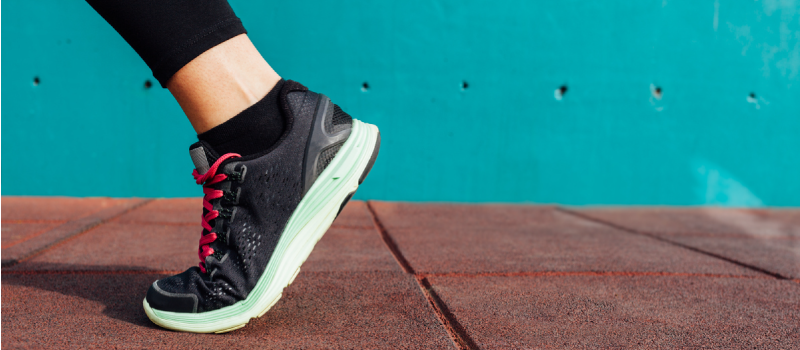
Strong AnklesAnkle sprains are one of the most common conditions injuries. The good thing is that it can possibly be avoided by enhancing your ankle strength. There are also many benefits attached in maintaining healthy and strong ankles. Healthy and strong ankles can definitely improve your legs and balance.
Perhaps, most of you think that ankle exercise is just for the athletes. Well, you are wrong, as even regular individuals can do a lot of ways to build ankle strength. Exercise can help you a lot and can be performed while watching TV or sitting down. You can even strengthen your ankles when adding weight for bigger challenge. Working on or stretching your balance could also build ankle strength.
Working out while Sitting
Performing ankle turn is one of the most effective ways that you can do to strengthen your ankles. Apart from that, it is also one easy way of ankle exercise that you can perform. While sitting in your chair, just slide the exercise band or jump rope under a single foot. Then, pull the rope/band to pull your ankle.
After doing that, push against bands’ force and slightly turns your ankle. The bands or the rope are stretching materials that have wider range of movement, that’s why they are very effective to use for strengthening your ankle. You can do it repeatedly as many as you can. You can also use old-shirt if no available jump rope or rubber band.
Performing exercise while standing
This type of ankle exercise is so easy, where you can try your toe raises. If you feel weak or you have issues in proper balancing, you can do this ankle work out placing your back on the wall. Make sure that you are not using anything that has overly weight in your hand while performing the exercise.
Stretching your ankle
This is another way of exercise that you can do to build your ankle strength. Place both of your hands on the wall for about shoulder heights, then prop your right ball touching the wall. You can always repeat doing this type of ankle exercise if you want. Once you experience ankle sprains, you have to immediately check them to prevent possible defects or any serious injury.
Practice Your Balance
Practicing your balance is also one of the most effective ways of exercise that can definitely improve your ankle strength. Stand on the pillow or wobble board with legs that are slightly closer than the shoulder width. After that, squat down in a slowly manner while controlling your squats’ speed.
Then, slowly go back to your standing position. It is best recommended to perform this exercise for about ten squats every in every set. You can repeat doing the set three times or more depending on your ankle strength. If you know more different ways of ankle exercise, you can add them on your list.
Strengthening your ankle is very important to be done now. It will not only help you to be more physically active, but can even enhance your physical performance.
Do I Need to See a Podiatrist for Corns?
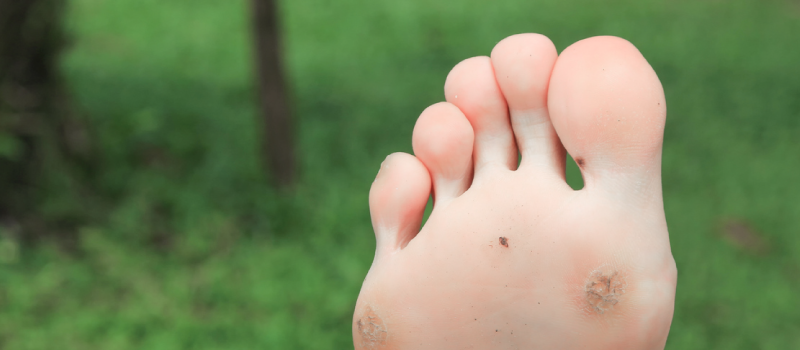
Corns are one of the top foot conditions that podiatrists see. They’re not contagious, but they can be unsightly and uncomfortable and often leave sufferers combing the internet for home remedies to relieve them. Though corns generally aren’t a serious problem, there are several good reasons to see a podiatrist for corns to ensure that they’re treated safely and effectively.
What are corns?
Corns are similar to calluses, in that they’re areas of hardened skin developed to protect parts of the body.
Hard corns are typically located on the tops or outsides of toes, and have a firm, dense center.
Seed corns show up on the heels and balls of feet, and resemble plugs of hardened skin.
Soft corns are usually found between toes, and are smooth and tender.
While calluses arise in areas subject to friction, corns develop in areas subject to pressure.
Can corns be treated at home?
Many people find themselves asking, “Can I treat the corns on my feet myself?” Unfortunately, this is often not the case. DIY remedies usually involve ingredients like lemon juice in an attempt to soften the hardened skin, or even cutting the corn off at home. These measures may not completely remove the corn, increase the odds of infection, and don’t do anything to prevent its recurrence.
Is it necessary to see a podiatrist for corns?
It’s a good idea to have corns treated by a professional. If they are cut or scraped, they can easily become infected. This is a particular risk in people with diabetes, heart disease, or poor circulation. Sometimes, corns may begin to discharge fluid on their own. This is typically a sign of infection, and warrants a doctor’s visit. In the office, a podiatrist can trim the corn and offer advice to keep it from coming back.
For corn sufferers wondering, “Should I visit a podiatrist for the corns on my feet?” The answer is: Probably. It is best to schedule a consultation to determine the extent of the corn just to be sure. Corns generally aren’t a serious problem, but they can become very uncomfortable and can be quickly and easily taken care of during a podiatrist’s office visit. To schedule a consultation with Advanced Foot and Ankle Center give our office a call at 562-426-0376.
Forget the Crutches and Try a Knee Scooter for a Broken Foot
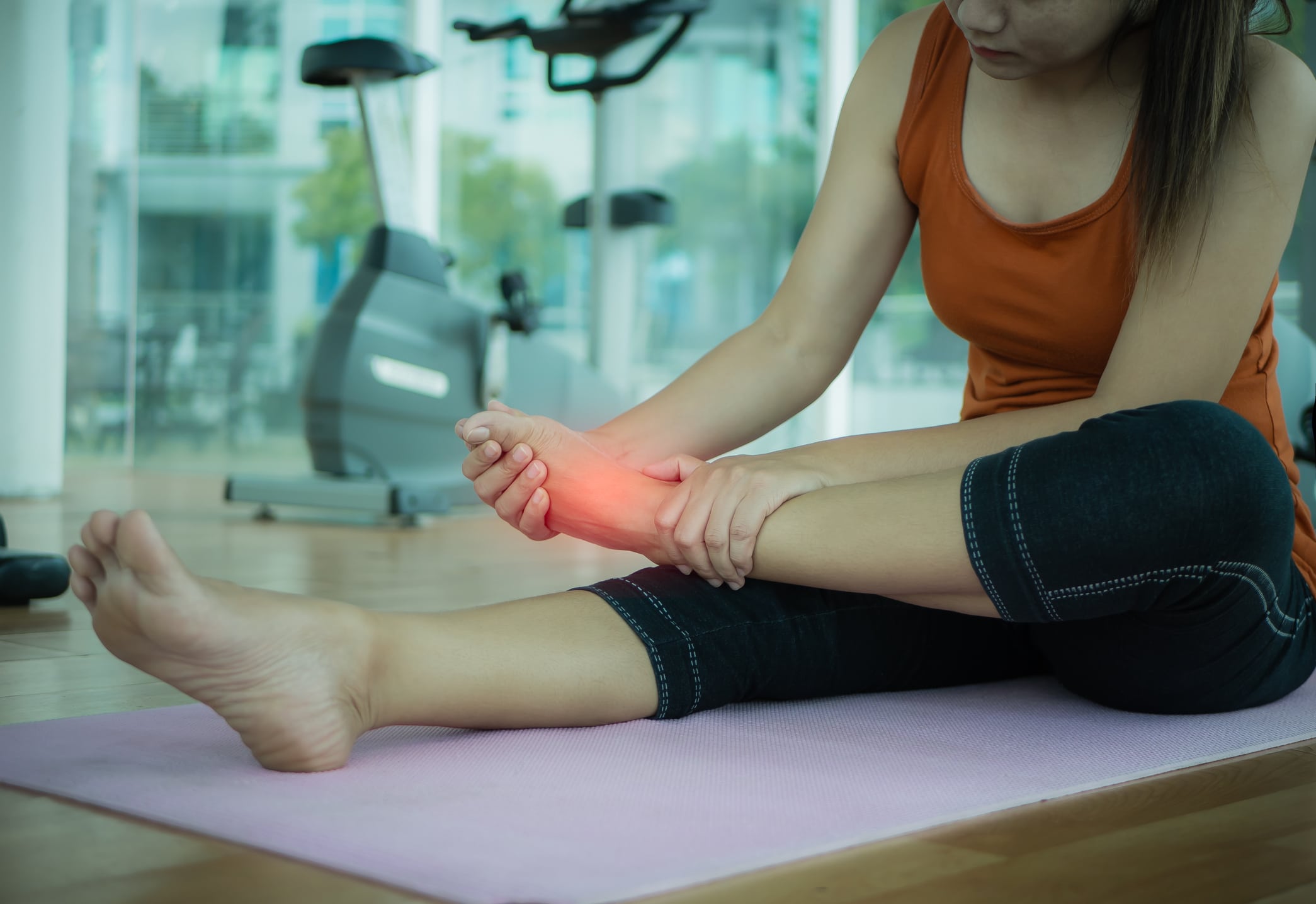
When you have a broken foot in a cast and you can’t put any pressure on it for at least a month, you have a major mobility issue. It’s bad enough that you’ll be unable to participate in many of your favorite activities during this time. But you still need to be able to get around at work, the market and your home and neighborhood. Of course, there are always crutches. But these, while relatively inexpensive, present some problems:
They limit upper body movement
They may not be comfortable
They are cumbersome
It can be difficult to maneuver
Higher risk of losing balance and falling
You may want to consider a knee scooter for a broken foot. This device looks somewhat like a child’s scooter but it has an elevated padded platform where the patient can rest a bended knee comfortably. It has wheels and handlebars which are used to navigate the scooter. It requires no upper body strength to operate. Crutches vs. knee scooter? There’s really no question there. The scooter is far superior. Let’s look at some reasons why: Your text to link…
Why is a Knee Scooter Better?
Stability
Your body is supported by the scooter. You can’t trip and fall. A purse or any bags can be placed in the scooter’s basket so they won’t affect your balance.
Speed
Trying to get even a few feet with crutches is exhausting. The scooter allows you to get where you’re going quickly without tiring yourself.
Maneuverability
The scooter can make tight turns easily without risk of losing balance and falling.
Use of a knee scooter also eliminates muscle strain and lower back pain that can result from using crutches.
Selecting a Knee Scooter
There are many different models, so you must be sure to try out your scooter and make sure it fits your needs. Make sure it glides along easily. You shouldn’t have to push hard to make it move. It should be easy to steer, even around tight corners. You should feel balanced as you operate it. The knee pad should feel supportive and be adjustable. The handlebars should also be adjustable. Make sure the brakes work well, too. Be sure to get a model with a basket so your hands are completely free at all times. Take your time. Don’t be pressured into choosing a model that doesn’t feel right for you. Ask about rentals, too. No need to buy an item you’ll need only for a short time.
Knee scooters can be purchased or rented from medical supply houses, some pharmacies, and some retailers.
As you can see, crutches vs. knee scooter isn’t much of a contest. Using a knee scooter instead of traditional crutches will make your recovery time much more pleasant and comfortable.
Differences Between an Ankle Strain and an Ankle Sprain
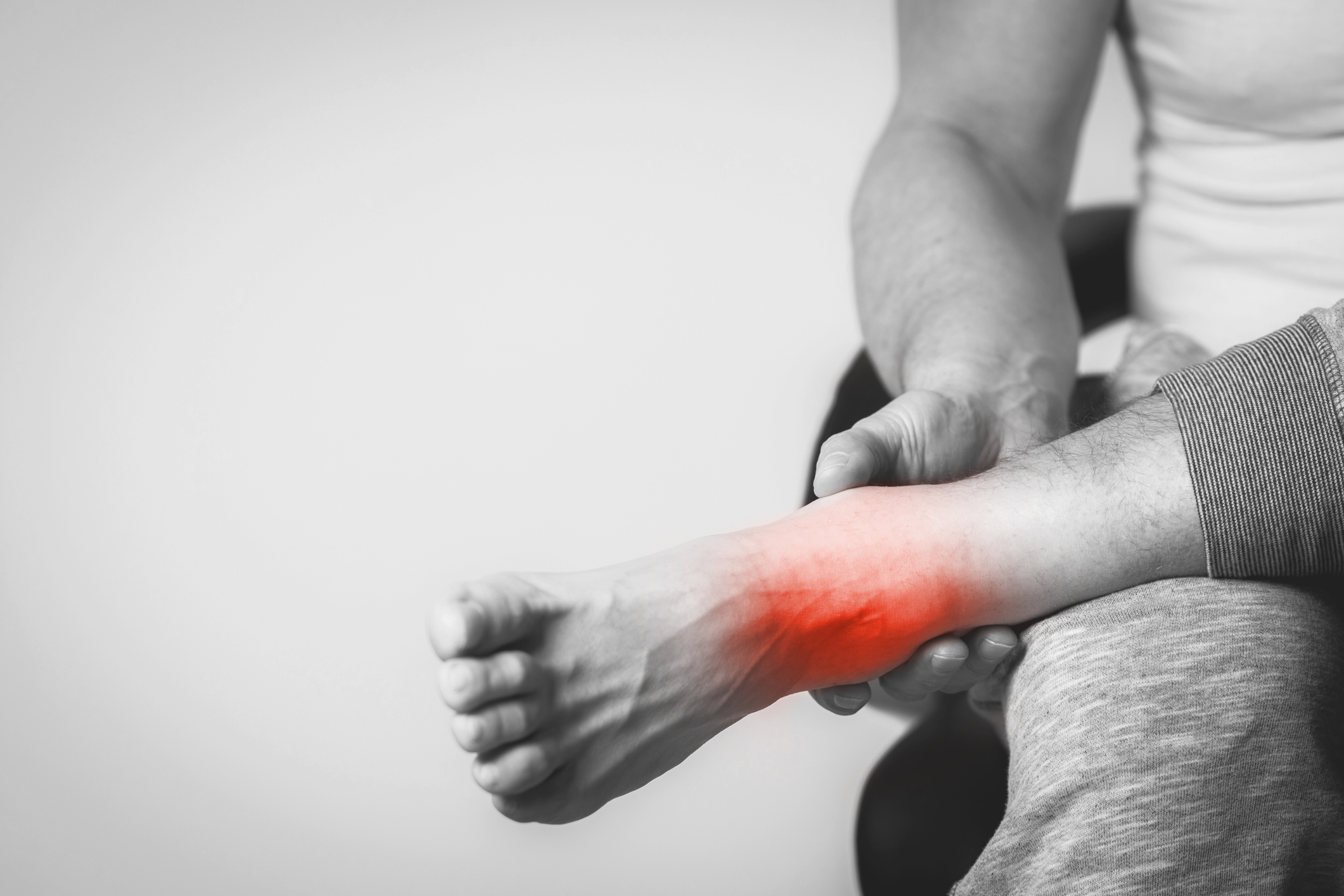
The ankle strain vs ankle sprain debate has confused people for several years. While they’re nothing alike, it sometimes can be hard to tell the difference between a strain and a sprain. A sprain occurs when you stretch or tear your ligaments. You can treat a mild sprain at home, while you may need surgery to help repair a torn ligament from a severe sprain.
Carrying on with the ankle strain vs ankle sprain debate, a strain happens when you sprain the bands of tissues that connect the bones in that area. It can damage the muscle or tissue that connects the bone to the muscle. While a strain is also stretching or tearing of that area if often happens in the muscle or tendon area. Here are the common signs of sprains and strains, and what to do when it becomes serious.
Symptoms
The symptoms among sprains and strains will vary on how severe the problem is. But the most common symptoms include bruising, pain, and swelling. You may notice that there’s limited movement in the affected area. If you sprain or strain your ankle, you may hear a popping sound in the joint area at the time of the injury or accident.
Causes
Sprains happen when you overuse a ligament while baring stress or weight onto it. Sprains often take place in the ankle, knee, thumb, or wrist area. Children are more prone to fractures than sprains they have an increase in softer tissues, known as growth plates, that are located on the bones. Since the ligaments surrounding the joint is stronger than the growth plates, children are more likely to have a fracture than a sprain.
Risk Factors
There are several risk factors associated with sprains and strains. Some of those risk factors depend on environmental conditions, fatigue, and poor equipment.
Prevention
Strengthening and stretching your muscles for fitness, sport, or work activities can prevent your risk of sprains and strains. This involves staying in shape and following your exercise routine. However, you shouldn’t participate in a sport in an effort to stay in shape. If your job is physically demanding, then regular conditioning exercises can reduce your risk of injuries.
You can also prevent strains and sprains by conditioning and strengthening the muscles surrounding the joint that was hurt. What you should do is invest in a muscle brace. Your doctor can also provide examples of conditioning and stability exercises. You should also wear footwear that offers protection and support of your ligaments and bones.
When to See Your Doctor
There are several situations in which you need to talk to your doctor after spraining or straining your ankle. While you can treat a sprain at home, it could lead to other problems like fractures. You should book an appointment with Dr. Pedram Aslmand immediately if you experience numbness in the affected area. You should also see your doctor if the affected joint doesn’t move, or you experience pain on the bone of that injured joint.
In addition, The National Institute of Arthritis and Musculoskeletal and Skin Diseases has listed several ways to prevent strains and sprains. This involves avoiding falls, maintaining a healthy weight, and wearing the right equipment for the sport you play.
3 Signs That You May Have Gout
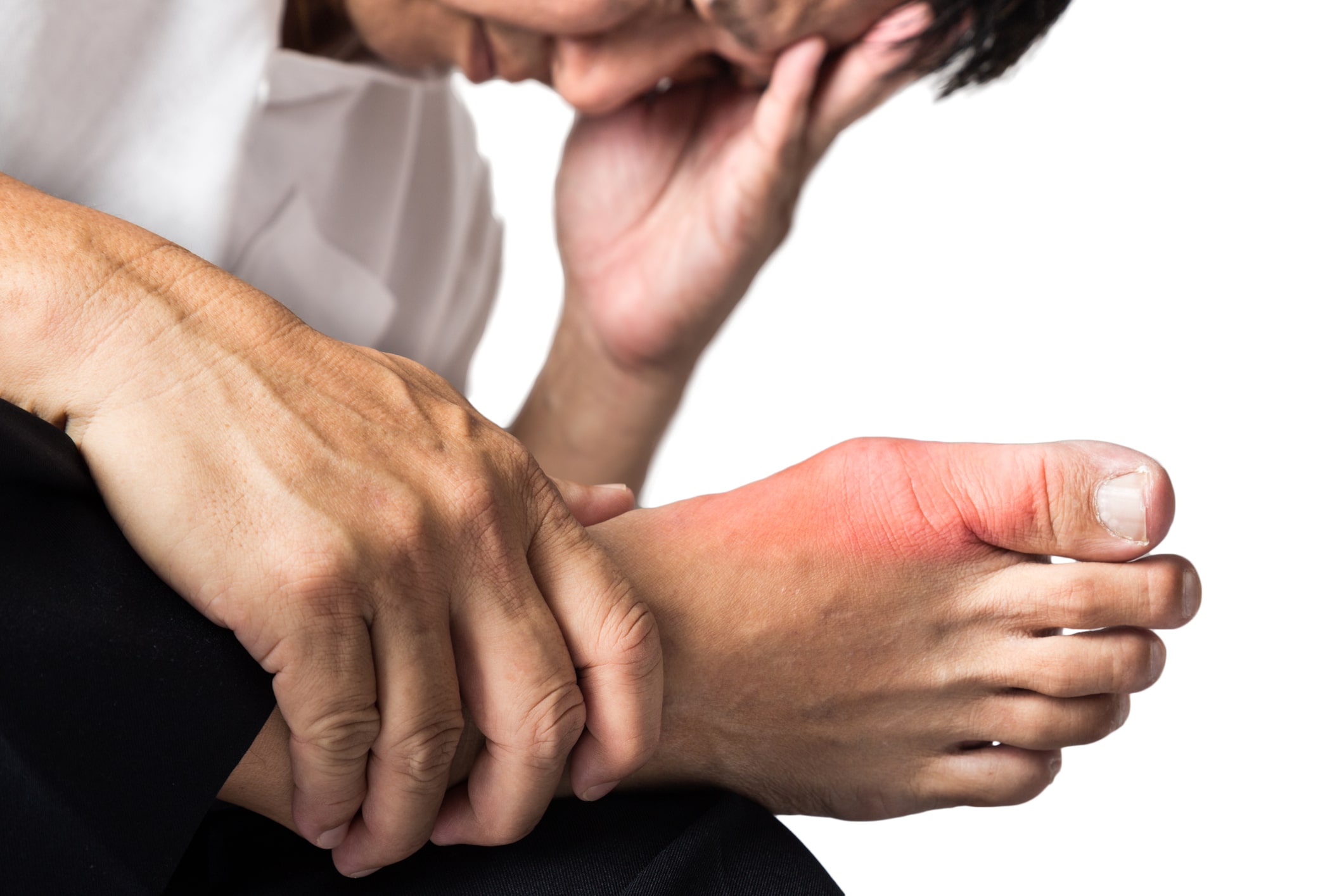
Gout is one of those illnesses that most people never consider, yet it’s distressingly common. Figuring out if you have gout, though, can be difficult. It does share symptoms with several other conditions and it takes professional help to get a diagnosis. If you’re concerned that you might have gout, though, it helps to look at the basic symptoms. According to Dr. Pedram Aslmand, these are some of the more common gout symptoms in the foot.
Painful Big Toe
The go-to symptom when discussing gout is a pain in your big toe. When your body is unable to properly break down uric acid, it can lead to a buildup of the substance in your blood and eventually to the buildup of uric acid crystals around your joints. When you have gout, there’s a very good chance that these crystals will have made their way all the way down to the joint of your big toe. It’s important to note that the pain from gout isn’t a simple ache or even a brief stab – even having the area lightly touched can be excruciating.
Lumps and Bumps
When gout occurs, it’s due to the buildup of urate in your blood. In some cases, this buildup can also lead to the formation of crystalized uric acid near your joints. These mounds of crystals have the appearance of strange lumps or bumps on the skin, which are called tophi. The good news is that tophi aren’t permanent and can go away once you get treatment. The bad news, though, is that tophi are a sign that your gout has progressed significantly and they tend to accompany other, more painful symptoms.
Swelling Joints
This is another one of those gout symptoms in the foot that is both a tell-tale sign of gout and that is often ignored by those who have little experience with the condition. It’s very common for uric acid to build up in the area around the joint, leading to significant swelling. This is often seen around the big toe, but it can also occur at other joints. If you experience significant swelling around your joints in addition to the other symptoms listed here, there is a very good chance that you have gout.
Pain in your big toe, the appearance of tophi, and swelling in your joints are all signs that you might have gout. If you are experiencing any of these symptoms, it’s a good idea to meet with a physician. Gout is a very treatable illness, but it isn’t something with which you can deal on your own. If you think that you might have gout, make sure that you seek out medical treatment today.

